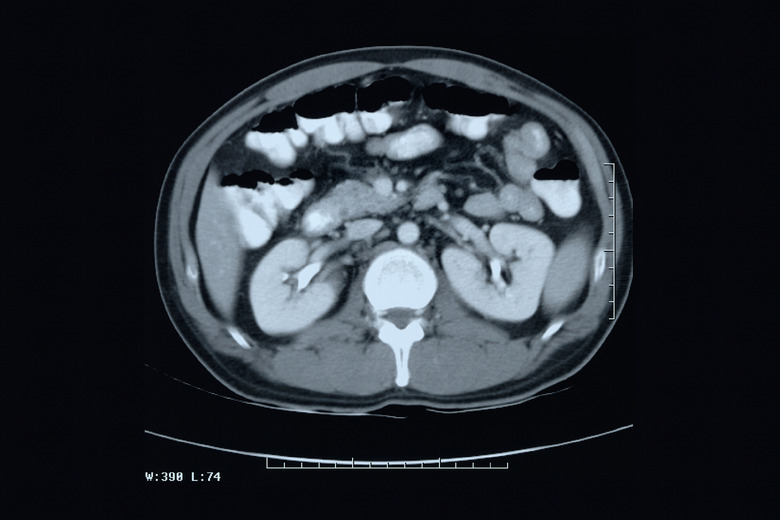How To Make A 3D Model Of The Large Intestine
Food travels through the body in the digestive system as it is broken down and changed into fuel for use by the body. It reaches the large intestine last, where water that remains after digestion is removed. This helps regulate the body's hydration. The large intestine also removes the waste that the body does not use.
Step 1
Lay the Styrofoam sheet on a flat surface. Trace the outline of a torso, leaving at least 2 inches on each side of the Styrofoam. Trace an outline of the large intestine, small intestine and stomach as indicated by the diagram. Cut out the long intestine diagram with the utility knife. This should leave an open space along the left side, across the middle and down the right side of the Styrofoam sheet.
Step 2
Roll the white modeling foam into a snake shape that is long and wide enough to fill the space of the large intestine diagram previously cut. Shape the foam to mimic the bumpy surface of the large intestine.
Step 3
Insert the foam snake into the Styrofoam sheet so that it extends out the front of the sheet. Draw a black line across the front of the foam to divide it into the Cecum, Ascending Colon, Transverse Colon, Descending Colon, Sigmoid Colon and Rectum. Follow the diagram to accurately draw the lines.
Step 4
Remove the white foam from the Styrofoam sheet and lay on a flat surface. Measure a 2-inch length of the transverse colon, and cut that area in half horizontally. This will expose a length of colon for modeling the interior of the large intestine. Hollow out this 2-inch area of the foam. Discard the top half as it will not be used.
Step 5
Choose one of the five colors of modeling foam to represent each of the following structures: Serosa, longitudinal muscle layer, circular muscle layer, submucosa and mucosa. Make a flat section of the serosa color that will fit inside the entire length of the 2-inch cut area. Make a flat piece of longitudinal muscle that is ¼ inch shorter, and lay this on top of the serosa layer. Make a flat piece of circular muscled that is ¼ inch shorter than the longitudinal muscle and lay on top of the longitudinal muscle. Make a flat piece of submucosa that is ¼ inch shorter than the circular muscle and lay on top of the circular muscle. Make a flat piece of mucosa that is ¼ inch shorter than the submucosa, and lay it on top of the submucosa. This will form the model of the inside of the large intestine.
Step 6
Place the completed model back into the Styrofoam sheet with the colored foam facing the front. Label each structure with a small piece of paper and attach to the Styrofoam or modeling foam with a pin.
Things Needed
- Digestive track diagram
- Styrofoam sheet
- Pencil
- Utility knife
- White modeling foam
- Black marker
- Knife
- Colored clay
- Paper
- Pen
- Pins
References
Cite This Article
MLA
Marcotte, Dawn. "How To Make A 3D Model Of The Large Intestine" sciencing.com, https://www.sciencing.com/make-3d-model-large-intestine-6939722/. 24 April 2017.
APA
Marcotte, Dawn. (2017, April 24). How To Make A 3D Model Of The Large Intestine. sciencing.com. Retrieved from https://www.sciencing.com/make-3d-model-large-intestine-6939722/
Chicago
Marcotte, Dawn. How To Make A 3D Model Of The Large Intestine last modified March 24, 2022. https://www.sciencing.com/make-3d-model-large-intestine-6939722/
